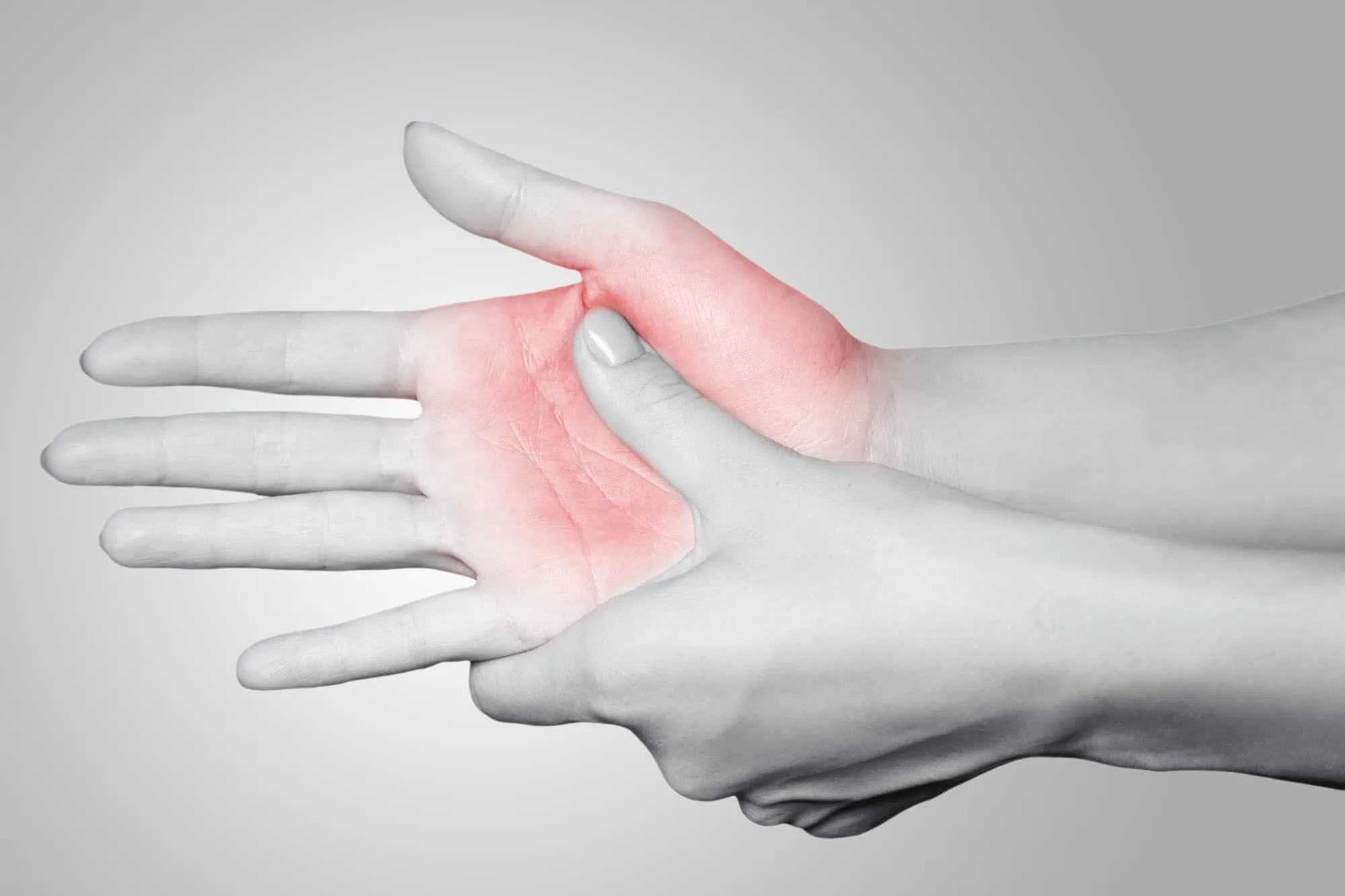What Is Tendon Transfer In Hand?
Tendon transfer is a treatment method applied to regain hand functions in cases where hand functions are lost due to various reasons. Hand tendon transfer is performed as a result of taking a functioning muscle group or muscle part from its location and placing it where it is needed.
Many different conditions can be treated with hand tendon transfer surgery. Hand tendon repairs are a preferred surgical treatment method for regaining lost hand functions. As a result of damage to the nerves, the nerves cannot send a signal to the muscle in cases where the treatment does not work or is not treated. Thus, the muscles lose their function. Hand tendon transfer surgery is mostly preferred to treat brachial plexus, radial nerve, ulnar nerve, and median nerve diseases.
More than 40 tendons under the elbow are assigned to perform the functions of the hand. Only nine muscle groups are responsible for performing thumb movements. Different muscle groups of the hand are associated with each tendon movement that occurs.
If you are considering hand tendon repair surgery in Turkey, contact us today to determine if this procedure is right for you and get the necessary information.

Benefits of Hand Tendon Transfer Surgery
This surgery can provide many benefits for patients, including:
Improved Hand Function: Hand tendon repair surgery can improve hand function by restoring movement to the affected area. This can allow patients to perform activities that were once difficult or impossible to do, such as writing, typing, and gripping objects.
Increased Range of Motion: After hand tendon transfer surgery, patients may experience an increase in their range of motion. This can help to reduce stiffness and improve overall flexibility in the hand.
Reduced Pain: Patients who undergo tendons in hand transfer surgery may experience a reduction in pain, as the procedure can help to alleviate pressure and tension in the affected area.
Faster Recovery Time: Hand tendon transfer surgery is typically less invasive than other types of hand surgeries, which can result in a faster recovery time for patients.
Improved Quality of Life: By improving hand function and reducing pain, tendons in hand transfer surgery can significantly improve a patient’s quality of life. Patients may be able to return to work or engage in activities they enjoy, which can have a positive impact on their mental health and well-being.
What Is the Process of Tendon Repair Surgery?
Hand tendon transfer is performed as follows;
- It is necessary to take physical therapy after plaster cast
- Plaster treatment is applied for 4 weeks after tendon transfer.
- While performing hand tendon repair, the starting point of the muscle, vessels and nerve structure are preserved.
- The muscle is taken from the place of attachment to the muscle groups attached to the muscle and is attached to the muscle group that has another task.
- Thus, when the muscle is contracted, it is ensured that the muscle group to which it is directed does the necessary movement, not the movement that it should normally do.

How Long Do Tendon Transfers Last?
One of the most common questions patients have is how long the effects of the surgery will last. The answer to this question can vary depending on a variety of factors, such as the specific condition being treated, the patient’s age and overall health, and the success of the surgery. In general, tendon transfer surgery can provide long-lasting benefits for patients, but the duration of these benefits can vary.
For example, in cases of carpal tunnel syndrome, which is a condition that affects the wrist, tendon transfer surgery can provide long-lasting relief from symptoms such as pain, numbness, and tingling. Patients who undergo this surgery can expect to experience significant improvement in their symptoms for many years, and in some cases, the benefits of the surgery may last a lifetime.
In cases of brachial plexus injuries, which are injuries to the nerves that control the shoulder, arm, and hand, the benefits of tendon transfer surgery may be more variable. While some patients may experience long-lasting improvement in function and mobility, others may require additional surgeries or therapies to maintain their results.
In summary, the duration of the benefits of tendon transfer surgery can vary depending on a variety of factors, but in general, this procedure can provide long-lasting relief from pain, improve function and mobility, and enhance a patient’s quality of life.
What to Expect After Hand Tendon Transfer Surgery?
The following are some common things patients can expect after tendons in hand transfer surgery:
Pain and Swelling: It is common for patients to experience some pain and swelling in the affected area after surgery.
Limited Mobility: Patients may experience limited mobility in the affected hand for several weeks after surgery. It is important to follow your surgeon’s instructions for rehabilitation exercises to help improve mobility and prevent stiffness.
Physical Therapy: After surgery, patients will need to participate in physical therapy to help restore strength and function to the affected hand. Your physical therapist will work with you to develop a personalized rehabilitation plan.
Dressing Changes: Your surgeon will likely place a dressing or cast on the affected hand after surgery. You will need to keep this dressing clean and dry, and you may need to return to the surgeon’s office for dressing changes.
Follow-up Appointments: Your surgeon will schedule follow-up appointments to monitor your progress and ensure that the tendon transfer is healing properly.
Restrictions on Activities: Patients may need to avoid certain activities or movements for several weeks or even months after surgery to allow the tendon transfer to heal properly.
Tendon Rupture: In rare cases, the transferred tendon may rupture or tear, which can require additional surgery.
Stiffness: After surgery, some patients may experience stiffness in the affected hand. Physical therapy and hand exercises can help to improve mobility and flexibility.
Allergic Reactions: Some patients may have an allergic reaction to the anesthesia or other medications used during the surgery.
Risks and Complications of Hand Tendon Transfer Surgery
Infection: Like all surgeries, there is a risk of infection with hand tendon transfer surgery. Patients are typically given antibiotics before and after the surgery to help prevent infection, but it can still occur in rare cases.
Nerve Damage: During the surgery, there is a risk of damage to nerves that control hand movement. This can lead to weakness or even paralysis in the affected hand.
Blood Clots: Blood clots can form in the legs after surgery, which can be dangerous if they travel to the lungs. Patients are typically given blood thinners and encouraged to walk as soon as possible after surgery to help prevent blood clots.
Scarring: Scar tissue can form around the incision site, which can affect hand function and mobility. Physical therapy may be necessary to help improve hand function after surgery.
How Much Does a Tendon Transfer Cost in Turkey?
The average hand tendon surgery cost in Turkey is between 7000$ to USD 9500$. However, it can easily show differences on several factors.
One of the biggest factors that can affect the cost of tendon transfer surgery is the location where the surgery is performed. The cost of medical procedures can vary greatly from one region to another, and even from one hospital to another within the same region. MD. Burak Sercan is currently based in Turkey, making such operations affordable for most.
Another factor that can affect the cost of tendon transfer surgery is the severity of the patient’s condition. In some cases, multiple surgeries may be required to fully address the issue, which can increase the overall cost of the procedure.
Hand Tendon Surgery FAQ
How Painful Is Hand Tendon Surgery?
What Can You Not Do After Tendon Surgery?
Following tendons in hand surgery, patients may need to avoid certain activities to allow for proper healing. This can include heavy lifting, pushing or pulling heavy objects, and repetitive hand movements. Your surgeon will provide specific instructions for activities to avoid during the recovery period.
What Can I Expect During the Hand Tendon Transfer Surgery Procedure?
Hand tendon repair surgery involves transferring a tendon from one area of the hand or wrist to another to improve hand function. The procedure is typically performed under general anesthesia, and the surgeon will make an incision in the hand or wrist to access the tendon. The transferred tendon will then be anchored in place using sutures or other devices.
When Can I Return to Resume Daily Activities After Hand Tendon Transfer Surgery?
The length of the recovery period after hand tendon transfer surgery can vary depending on the individual and the extent of the surgery. In general, patients can expect to need several weeks of rest and rehabilitation before they can return to daily activities.
What Type of Hand Exercises Will I Need to Do After the Surgery?
Patients will typically need to participate in hand therapy exercises to improve hand strength and function. These may include a range of motion exercises, gripping exercises, and stretching exercises. Your therapist will provide specific instructions for the exercises based on your needs.
Can I Drive After Hand Tendon Transfer Surgery?
You should not drive until you have been cleared by your surgeon and feel comfortable using the affected hand for driving. This may take several weeks or longer, depending on the healing process and the extent of the surgery.








